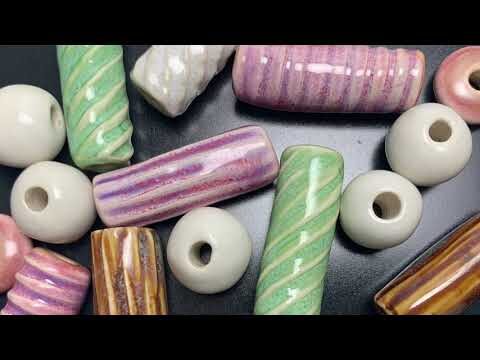Unlock your creativity and unleash your artistic talents with the timeless art of sculpting with clay techniques. Whether you’re a seasoned sculptor or a beginner looking to explore a new medium, clay offers endless possibilities for creating unique and intricate designs. From hand-building to wheel-throwing, this versatile material allows you to mold, shape, and carve your way to stunning works of art. In this article, we’ll explore the basics of sculpting with clay techniques and provide tips and tricks to help you master this age-old craft.
What methods are used in clay modelling?
Clay modelling offers a variety of methods for artists to explore and create unique sculptures. One common technique is pinching, which is perfect for crafting small, hollow forms such as bowls, cups, and pots. This method allows beginners to develop a tactile understanding of the clay and gain control over its shape, making it an excellent starting point for those new to the craft.
Another popular method is coiling, which involves rolling out long, thin ropes of clay and stacking them to form a structure. This technique is versatile and can be used to create a wide range of shapes and sizes, making it a favorite among experienced clay modellers. Coiling offers a great way to build larger, more complex sculptures while allowing for intricate detailing and unique designs.
In addition to pinching and coiling, artists can also explore other methods such as slab building and wheel throwing to further expand their clay modelling repertoire. Each technique offers its own set of challenges and opportunities for creative expression, making clay modelling a dynamic and rewarding art form to explore.
How is clay molded?
Molding clay is a simple and ancient technique that involves pinching and shaping the clay with your fingers. By wedging the clay and then pressing and pulling at it, you can easily form it into a desired shape, such as a bowl. This hands-on method allows for a great deal of creativity and precision, making it a popular choice for many artists and sculptors.
What are the four main types of sculpting techniques?
Sculpting techniques can be broadly categorized into four main types: carving, modeling, casting, and assembling. Carving involves cutting and shaping a material such as wood or stone using tools like chisels and knives. This technique allows for intricate details and precise shaping. Modeling, on the other hand, involves adding and shaping material, such as clay or wax, to create a three-dimensional form. It allows for more fluid and flexible designs. Casting is a technique where a mold is created and then filled with a liquid material, such as metal or plaster, to create a replica of the original form. Assembling involves putting together different materials, such as found objects or pieces of metal, to create a sculpture.
Each of these sculpting techniques offers unique opportunities for artists to express their creativity and bring their visions to life. Carving allows for meticulous and controlled shaping, while modeling offers a more hands-on and malleable approach. Casting provides the opportunity to create multiple copies of a sculpture, while assembling allows for the incorporation of various materials and textures. By mastering these techniques, artists can explore a wide range of possibilities and bring their artistic ideas into physical form. Whether it’s the precise detailing of a carved sculpture or the dynamic composition of an assembled piece, these techniques offer endless potential for artistic expression.
Transform Clay into Art: Mastering Sculpting Techniques
Unleash your creativity and elevate your sculpting skills with our comprehensive guide on transforming clay into art. Whether you’re a beginner looking to learn the basics or an experienced sculptor seeking to refine your techniques, this resource is your key to mastering the art of sculpting. From sculpting tools and materials to advanced sculpting techniques, this guide covers everything you need to know to bring your artistic visions to life. With step-by-step instructions and expert tips, you’ll be able to create stunning sculptures that showcase your talent and passion for the craft. Let your imagination run wild and watch as your clay creations evolve into true works of art.
Unleash Your Creativity: Advanced Clay Sculpting Mastery
Unleash your creativity and take your clay sculpting skills to the next level with Advanced Clay Sculpting Mastery. In this comprehensive course, you will learn advanced techniques and expert tips to create stunning and intricate clay sculptures. From mastering intricate details to sculpting lifelike figures, this course will empower you to unleash your creativity and elevate your sculpting abilities to new heights.
Discover the art of advanced clay sculpting and unlock your potential as a sculptor. With step-by-step guidance and hands-on practice, you will gain the confidence and skills to bring your imagination to life through clay. Whether you are a seasoned sculptor or a beginner looking to hone your craft, Advanced Clay Sculpting Mastery is the ultimate resource to refine your skills and unleash your creativity in the world of clay sculpting.
Mastering the art of sculpting with clay techniques requires patience, precision, and creativity. By exploring various methods such as coiling, pinching, and slab building, artists can bring their vision to life in three-dimensional form. The tactile nature of working with clay allows for endless possibilities and opportunities for artistic expression. With practice and dedication, sculptors can hone their skills and create captivating pieces that resonate with viewers on a deep emotional level. Through the transformative process of molding and shaping clay, artists have the power to evoke powerful emotions, tell compelling stories, and leave a lasting impression on the world of art.



